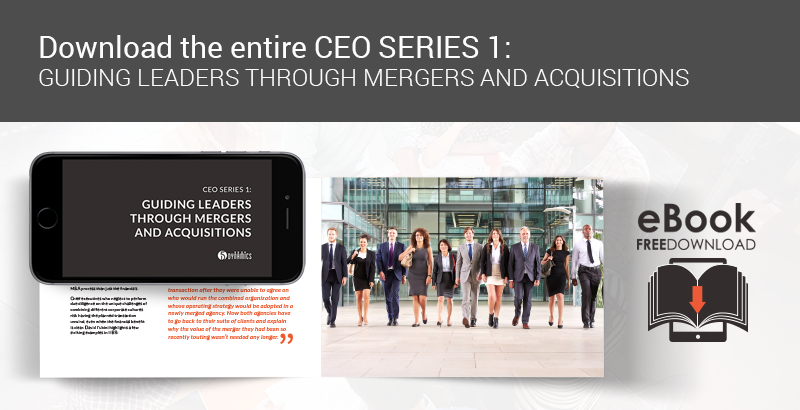Managing Cultural Differences For Successful Mergers & Acquisitions

Effectively managing cultural differences is a necessity for any successful merger or acquisition. Differing cultural norms, values, and beliefs between two merging companies will inevitably come into conflict. Experienced CEOs anticipate and plan for such conflicts, leveraging change management strategies to encourage the smooth integration of formerly independent teams and divisions. An acquiring company will experience significantly fewer difficulties by finding ways to be accommodating in integrating the acquired company’s culture.
Successfully merging cultures through an M&A process requires attention to four key features:
- Defining a vision for the new, combined company culture
- Communicating clear expectations to all employees
- Recognizing and avoiding in-group/out-group dynamics
- Expecting healthy debate and clarifying where the leadership stands
Define a New Cultural Vision
The CEO plays a critical role in a merger or acquisition by cultivating a vision of the new company culture. Even when merging with or acquiring a much smaller company, it’s important to acknowledge that the larger company’s culture will not remain 100% unchanged. “Experts say there’s no such thing as a merger of equals: one company always brings the dominant culture. Smart companies will go out of their way to be protectionist and preserve certain parts of the smaller entity.”
Acquisition often represents an achievement for the acquired company. A recognition that something within the company culture was successful in driving business performance to create value. Smart companies recognize this and will incorporate values, behaviors, or norms from the smaller company as a new expression of the dominant company’s culture. Without embracing the new company’s culture, the dominant company risks destroying what made that company attractive in the first place.
Make Expectations Clear
It is difficult to perform to the best of your abilities when expectations are unclear. During the integration process, employees from both companies are likely to face conditions of uncertainty and shifting standards. Of two different cultural norms, which one should guide decision-making in a given instance? Through the integration process, CEOs need to make clear which cultural norms will be preserved and which will be discarded. When employees don’t know what’s expected of them in a new environment, it impedes performance. Setting clear expectations that flow from the CEO’s vision for the newly merged company enables employees to confidently make decisions.
Address In-Group/Out-Group Dynamics
All human beings have a tendency to form impressions based on in-group and out-group dynamics. This is a tendency that must be addressed and overcome if a CEO wants to ensure productive working relationships are formed between members of formerly distinct companies and teams. As Matthew Bird puts it for HBR, “When contact occurs in a situation like an acquisition and in-groups and out-groups form, members of the in-group have a tendency to homogenize members of the out-group, without attention to the diversity and differences within the out-group. To overcome this, leaders may structure contact situations so that members of the in-group and out-group must treat one another as individuals.”
One approach is to “create integration teams composed of both groups who must work on shared tasks, thus forcing them to personalize their interactions and focus on specific, shared goals.” Another is to unify both groups under a larger structure that preserves the cultural identities of both groups but links them as different expressions of the same larger identity. For example, renaming the new organization symbolically shows that neither of the merging companies is treated as more important than the other. A third approach is to create structures and relationships that intentionally bring together different but complementary group strengths. Each group is then inclined to view the other as a partner working on a different aspect of a shared goal, thus encouraging positive attitudes towards the “out-group” while allowing the original group identities to survive.
Embrace Debate, Then Settle It
Attempting to merge different cultures is sure to create conflicts, but conflict doesn’t have to be negative. Debate about differing cultural values presents the chance to re-evaluate business practices. Newly formed organizations have the unique opportunity to leverage the “best of both worlds” to enhance company performance. The biggest risk to this process is allowing debate to drag on too long, encouraging both sides to become entrenched and reasserting destructive in-group/out-group dynamics. CEOs must be decisive as the ultimate decision-maker on which protocols to follow, behaviors to encourage, and norms to promote.
5 Dynamics enables CEOs to build an understanding of the respective cultures involved in an M&A process, which can help identify points of convergence and points of potential conflict.
Contact 5 Dynamics now to receive an analysis of your team’s cultural energy profile.



